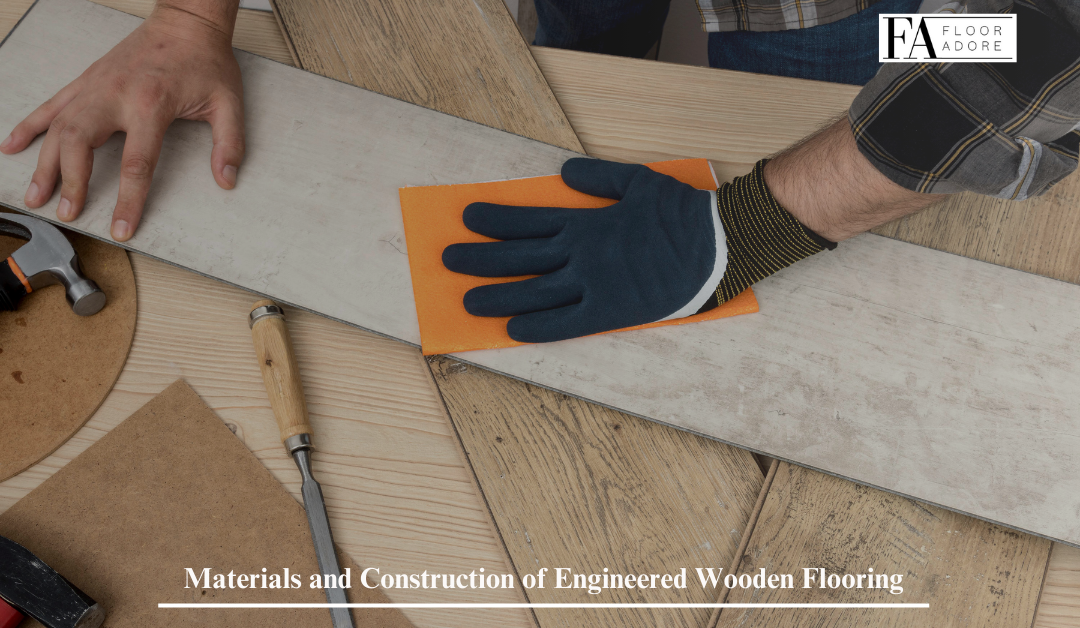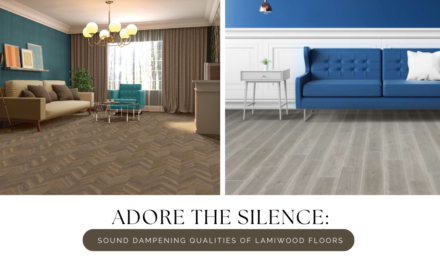When it comes to wooden flooring options, engineered wooden flooring stands out as a popular choice due to its durability, versatility, and aesthetic appeal. Understanding the materials and construction of engineered wood flooring can help homeowners make informed decisions when selecting the right flooring for their spaces. Let’s delve into the components and construction of engineered wooden flooring:
Materials Used in Engineered Wooden Flooring
- Top Layer (Veneer): The top layer of engineered wooden flooring, also known as the veneer, is made of real hardwood flooring. This thin layer typically ranges from 0.6mm to 6mm in thickness, depending on the quality and manufacturer. The veneer is what gives engineered wooden flooring its natural beauty, as it showcases the unique grain patterns and textures of the wood species used.
- Core Layers: Beneath the veneer, engineered wooden flooring consists of multiple core layers, usually made of plywood, high-density fiberboard (HDF), or medium-density fiberboard (MDF). These core layers provide stability, strength, and resistance to moisture and temperature fluctuations. The number and composition of core layers can vary depending on the manufacturer and product specifications.
- Backing Layer: The bottom layer of engineered wooden flooring serves as a stabilizing base and is typically made of plywood or other wood-based materials. This backing layer helps to balance the structure of the flooring, prevent warping or bowing, and provide additional support during installation.
Construction Process of Engineered Wooden Flooring
- Layering: The construction of engineered wooden flooring begins with layering the core materials, typically alternating the direction of the grain for added stability. The top layer, or veneer, is then bonded to the core layers using adhesive or heat compression techniques.
- Pressing and Bonding: Once the layers are stacked, they are subjected to high pressure and heat to bond them together securely. This process ensures that the layers adhere to each other uniformly and create a strong and stable composite structure.
- Finishing: After the bonding process, the engineered wooden flooring undergoes finishing treatments, such as sanding, staining, and sealing. These treatments enhance the appearance, durability, and performance of the flooring, providing a smooth and uniform surface that is ready for installation.
- Cutting and Sizing: The finished engineered wooden flooring is then cut into planks or panels of various sizes and dimensions, depending on the product specifications and customer requirements. These planks are carefully inspected for quality and consistency before being packaged and shipped to retailers or customers.
Advantages of Engineered Wooden Flooring
- Durability: Engineered wooden flooring is highly durable and resistant to warping, bowing, and cupping, making it suitable for high-traffic areas and environments with fluctuating humidity levels.
- Versatility: Engineered wooden flooring comes in a wide range of wood species, finishes, and textures, allowing homeowners to achieve their desired look and style.
- Easy Installation: Engineered wooden flooring is often designed for easy installation, with options for glue-down, nail-down, or floating installations, depending on the product and manufacturer.
Conclusion
Engineered wooden flooring offers a blend of natural beauty, durability, and versatility that makes it a popular choice for homeowners and designers alike. By understanding the materials and construction of engineered wooden flooring, homeowners can make informed decisions when selecting flooring options for their spaces, ensuring a beautiful and long-lasting investment in their homes.





